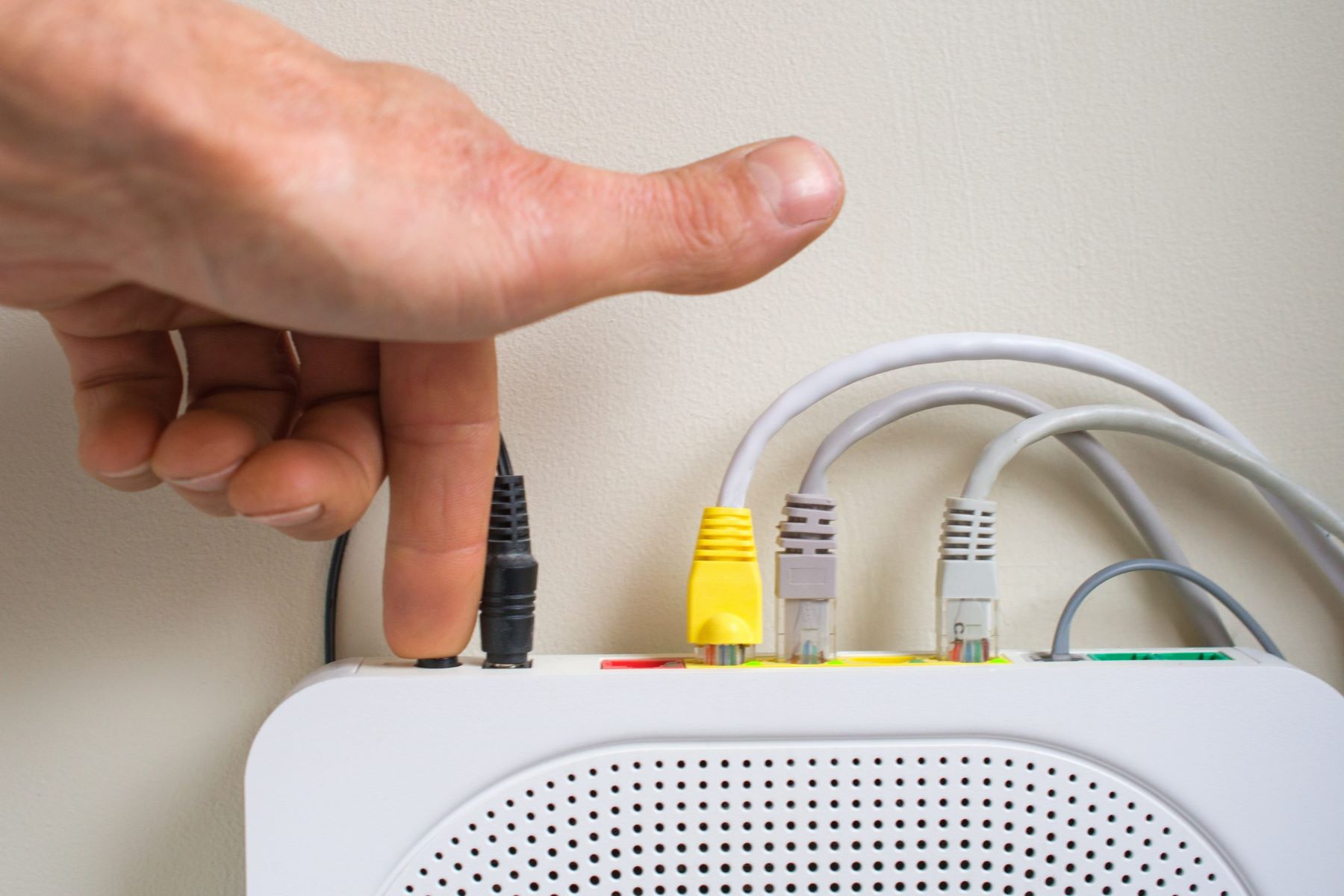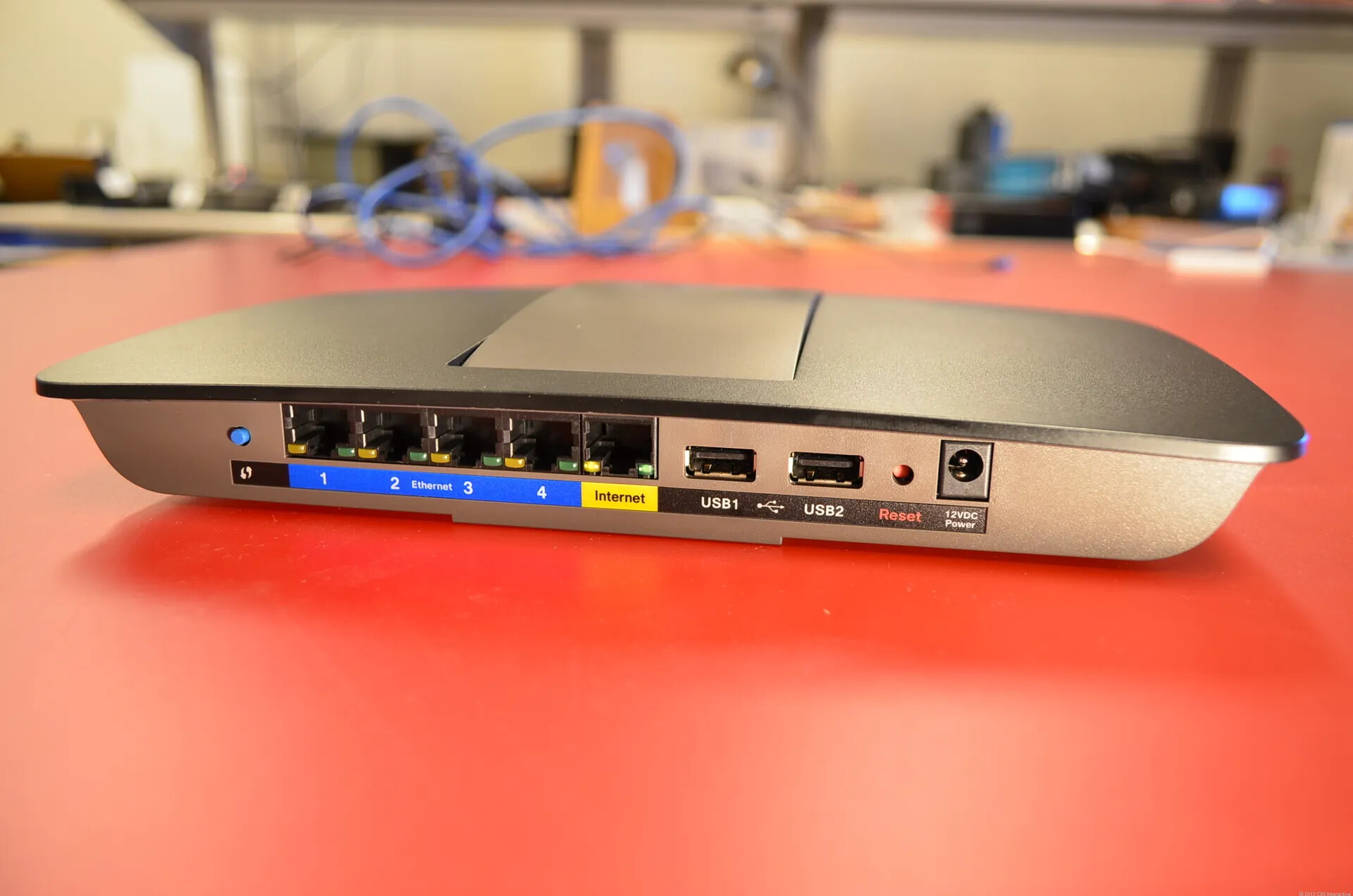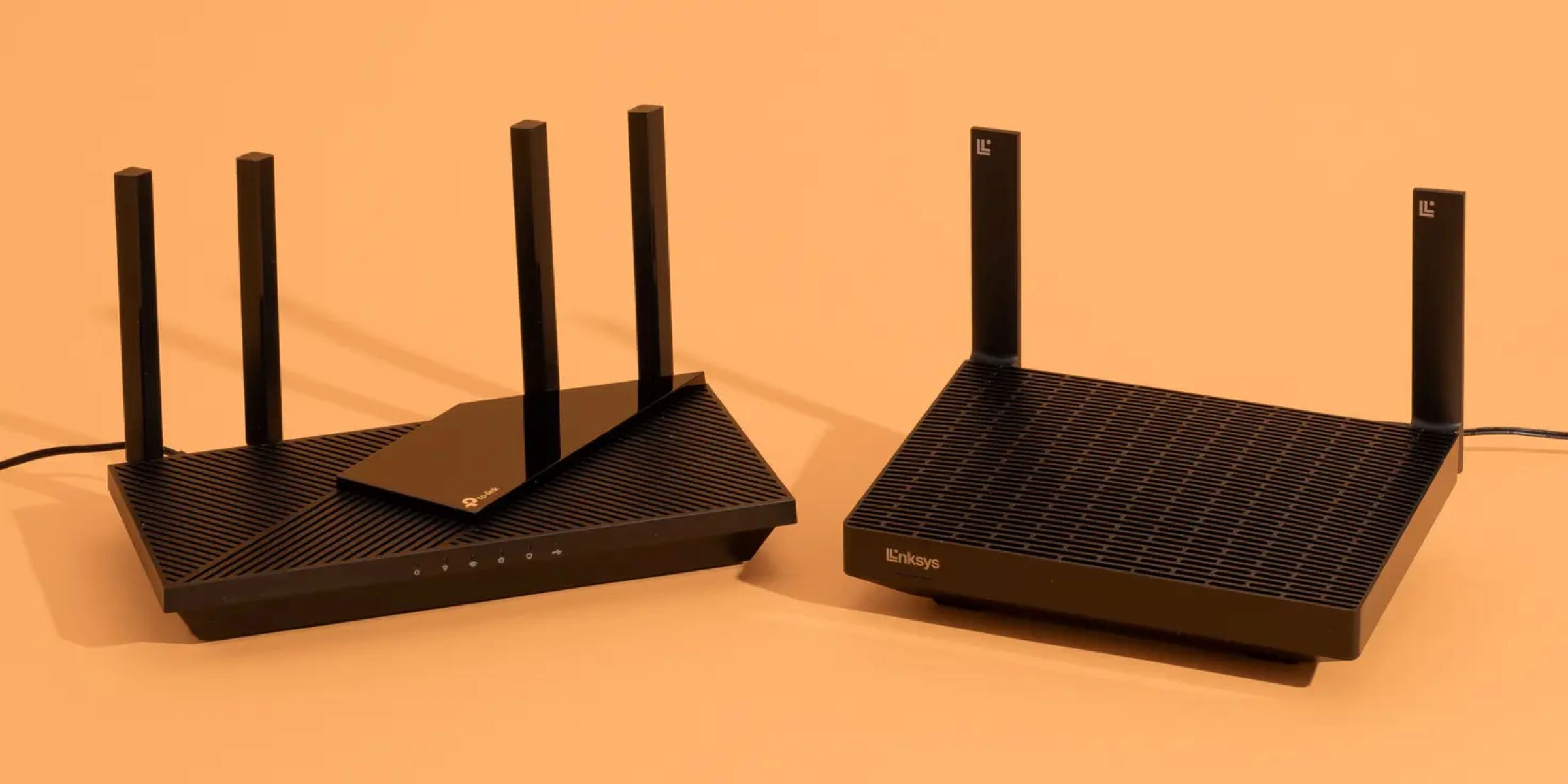Introduction
A router is an essential device that connects multiple devices to a network, enabling them to communicate with each other and access the internet. Whether you’re streaming movies, conducting important business meetings, or simply browsing the web, a reliable router ensures a smooth and uninterrupted online experience.
In the world of technology, even the most advanced routers can encounter issues at times. Slow internet speeds, frequent connection drops, and wireless signal problems are just a few common scenarios that users may face. While troubleshooting these issues might involve various steps, one solution that often comes up is resetting the router.
Resetting a router can be a simple yet effective way to resolve many router-related issues. But why do routers need to be reset in the first place? In this article, we will explore the reasons behind this necessity and the benefits that come with it. Additionally, we will provide a step-by-step guide on how to reset a router properly.
So, whether you’re a tech-savvy individual or a casual internet user, understanding the importance of resetting a router can prove to be valuable knowledge. Let’s dive into the world of routers and discover why a reset can sometimes be the answer to your connectivity troubles.
What is a router?
A router is a device that acts as the central hub of a network, allowing devices to connect to each other and share information. It serves as a bridge between your local area network (LAN) and the wider internet. In simple terms, a router directs traffic between various devices within your network and enables communication with external networks.
Think of a router as a traffic cop that guides data packets from one device to another. It receives data from a source device, such as a computer or smartphone, and forwards it to the intended destination, whether it’s another device on the same network or a server on the internet.
Routers are equipped with multiple ports, allowing you to connect devices via Ethernet cables. They also have wireless capabilities, enabling devices to connect to the network via Wi-Fi. This versatility allows routers to support both wired and wireless connections, providing flexibility for different types of devices.
Furthermore, routers enable the creation of local networks by assigning unique IP addresses to connected devices. This allows devices to interact with each other and share resources, such as printers or file servers, within the network.
Overall, routers play a crucial role in facilitating communication and ensuring a smooth flow of data between devices. Without a router, individual devices would not be able to connect to each other or access the internet, making it an essential component of modern networking.
How does a router work?
Understanding how a router works can provide valuable insights into its functionality and the role it plays in network communication. At its core, a router employs a combination of hardware and software components to perform its tasks effectively.
When data is sent from a device within a network, such as a computer, the router receives the data in the form of data packets. These packets contain information about the source and destination of the data, as well as the content itself.
The router utilizes its routing table, a set of rules and instructions, to determine the best path for the data packets to reach the intended destination. This process is known as routing. The routing table contains information about different networks and the paths to reach them.
The router inspects the destination IP address of the data packet and applies forwarding logic based on this information. It uses network protocols such as Internet Protocol (IP) to identify the appropriate network and determine the next hop, or the subsequent router along the path, to transfer the data packet towards its destination.
The router forwards the data packet to the next hop router until it reaches the destination. It performs this task efficiently by using specialized hardware, such as network processors and switching chips, to quickly process and forward data packets.
In addition to routing data packets, routers also perform several other functions. One of these functions is Network Address Translation (NAT), which allows multiple devices within a network to share a single public IP address. NAT transforms private IP addresses to a public IP address to enable communication with external networks.
Routers also provide security features such as firewall protection, which helps prevent unauthorized access and protects the network from malicious activities. They can also implement Quality of Service (QoS) mechanisms to prioritize certain types of data traffic, ensuring a better user experience for applications such as voice and video calls.
Overall, routers are sophisticated devices that combine hardware and software components to route data packets, connect devices, and facilitate network communication efficiently and securely.
Common problems with routers
Routers, like any other electronic device, can experience various issues that may disrupt their functionality and cause connectivity problems for users. Understanding these common router problems can help troubleshoot and address them effectively. Here are some of the most frequently encountered router issues:
- Slow Internet Speed: Slow internet speeds can be frustrating, especially when you need a fast and reliable connection. This issue can arise due to several factors, including outdated router firmware, overcrowded Wi-Fi channels, or bandwidth limitations from your internet service provider.
- Intermittent Connection Drops: If your internet connection frequently drops, it can hinder your online activities and cause frustration. This problem can be caused by various factors, such as signal interference from other devices, outdated firmware, or a weak Wi-Fi signal.
- Wireless Signal Problems: Weak Wi-Fi signals or dead spots in certain areas of your home or office can be a common issue. This can be caused by the router’s placement, obstructions like walls or other electronic devices, or outdated Wi-Fi standards.
- Router Overheating: Routers generate heat during operation, and if they are not properly ventilated, they can overheat. This can lead to reduced performance or even a complete shutdown. Overheating can be caused by dust accumulation, a lack of airflow, or placing the router in a confined space.
- Network Security Issues: Routers can be vulnerable to security threats if not properly secured. Common security issues include weak or default administrator passwords, outdated firmware with known security vulnerabilities, or unauthorized access to the network.
- Compatibility Issues: Incompatible devices, such as older devices that do not support newer Wi-Fi standards, may not be able to connect to your router. This can result in connectivity issues or limited functionality for those devices.
These are just a few examples of the common problems that can occur with routers. It’s important to note that some issues may require advanced troubleshooting or professional assistance to resolve. However, in many cases, a simple router reset can address these problems and restore the router to its optimal performance.
Why do routers need to be reset?
Routers, like any other electronic device, can encounter issues that affect their performance and cause connectivity problems. When faced with persistent issues that are not easily resolved through other troubleshooting methods, resetting the router can often provide a solution. Here are some reasons why routers may need to be reset:
- Memory and Performance Issues: Over time, routers may accumulate temporary data or experience memory leaks that can affect their performance. Resetting the router clears out this temporary data and resets its memory, potentially improving performance.
- Software Glitches or Firmware Updates: Firmware updates or changes to router settings can sometimes cause software glitches. These glitches can result in connectivity issues or unexpected behavior. Resetting the router can help clear out these glitches and restore the router to a stable state.
- Network Configuration Issues: Making changes to the router’s network settings or configurations can sometimes lead to unintended consequences. These changes can affect connectivity, network performance, or security. Resetting the router can revert the configurations back to their default settings, eliminating any potential conflicts or misconfigurations.
- Clearing Cache and Refreshing Connections: Over time, routers store cached data and connection information that can impact their overall performance. Resetting the router clears out the cache and refreshes the connections, providing a clean slate for the router to operate optimally.
- Resolving Network Conflicts: In some cases, network conflicts can occur between the router and connected devices, resulting in connectivity issues. Resetting the router can help resolve these conflicts and establish stable connections.
It’s important to note that while resetting the router can often resolve common issues, it should be considered as a troubleshooting step of last resort. Before resetting the router, it’s advisable to try other basic troubleshooting methods such as power cycling the router, checking cables and connections, or updating firmware. Additionally, it’s recommended to backup your router’s settings and configurations before performing a reset to avoid any potential data loss.
By understanding why routers may need to be reset and when it’s appropriate to do so, users can troubleshoot router issues effectively and restore their network connectivity.
Benefits of resetting a router
Resetting a router can offer several benefits that can help improve its performance and resolve common connectivity issues. While it may seem like a simple solution, the act of resetting can have a significant impact on the router’s functionality. Here are some key benefits of resetting a router:
- Improved Performance: Over time, routers may accumulate temporary data or experience memory leaks that can affect their performance. Resetting the router clears out these issues, providing a fresh start for the device. This can result in improved speed, stability, and overall performance.
- Resolves Connectivity Issues: When faced with persistent connectivity issues, resetting the router can often resolve the problem. It clears out any network conflicts or misconfigurations, allowing devices to reconnect and establish stable connections.
- Restores Default Settings: Resetting the router reverts its settings back to their factory defaults. This can be beneficial if you’ve made changes to the router’s configurations that have resulted in connectivity issues or unintended consequences. Resetting allows you to start fresh with the default settings.
- Clears Cache and Refreshes Connections: Routers store cached data and connection information that can affect their overall performance. Resetting the router clears out this cache, refreshing connections and providing a clean slate for the router to operate optimally.
- Solves Software Glitches: Software glitches or firmware updates can occasionally cause issues with the router’s operation. Resetting the router can help clear out these glitches and restore the router to a stable state, ensuring proper functionality.
- Addresses Security Concerns: Resetting the router can be a security measure, especially if you suspect that the router has been compromised. It can restore the router to its default security settings, eliminating any potential vulnerabilities caused by unauthorized access or changes.
While resetting a router can offer many benefits, it’s important to note that it should be considered as a troubleshooting step of last resort. Before resetting, ensure that you have tried other basic troubleshooting methods and have backed up your router’s settings and configurations if necessary. Also, keep in mind that resetting a router will require reconfiguring the network settings and reconnecting devices.
By utilizing the benefits of resetting a router when needed, users can resolve common issues, improve performance, and restore stable connectivity to their network.
How to reset a router
Resetting a router is a relatively simple process that can help address connectivity issues and restore optimal performance. Here is a step-by-step guide on how to reset a router:
- Locate the Reset Button: Look for a small reset button on the router. It is usually recessed and can be found on the back or bottom of the device. The button may be labeled “Reset” or have a small circular arrow icon.
- Prepare for Reset: Before you proceed with the reset, it’s important to note that this action will erase all settings and configurations on the router. Make sure you have a backup of any important settings if needed.
- Press and Hold the Reset Button: Using a small object like a paperclip or a pen tip, press and hold the reset button for about 10-15 seconds. Be sure to apply firm and steady pressure to ensure the button is fully depressed.
- Observe the Router’s Lights: After holding the reset button for the designated time, you may see the router’s lights flash or blink momentarily. This indicates that the reset process has been initiated.
- Release the Reset Button: Once the lights have flashed, you can release the reset button. The router will then begin the reset process, which usually takes a few moments to complete.
- Wait for the Router to Reboot: Allow the router to reboot and initialize. During this time, the lights on the router may blink or change patterns. This is normal and indicates that the reset process is in progress.
- Reconfigure the Router: Once the router has finished rebooting, you will need to reconfigure the router’s settings. This includes setting up the network name (SSID), password, and any other desired configurations. You may refer to the router’s documentation for specific instructions on how to do this.
It’s important to note that the exact steps to reset a router may vary slightly depending on the make and model of the device. Consult the router’s user manual or the manufacturer’s website for specific instructions if needed. Additionally, perform a router reset only when necessary, as it will remove all customized settings and revert the router to its default state.
By following these steps, users can successfully reset their router and potentially resolve connectivity issues, improve performance, and restore stable network functionality.
Conclusion
Routers are vital components of our modern internet-connected world, providing connectivity and facilitating communication between devices. However, like any electronic device, routers can encounter issues that affect their performance and cause connectivity problems. When faced with such issues, resetting the router can often provide a simple yet effective solution.
Throughout this article, we have explored the importance of resetting a router and the benefits it offers. Resetting a router can clear temporary data, resolve software glitches, restore default settings, and refresh connections, ultimately improving performance and addressing common connectivity issues.
It’s important to note that resetting a router should be considered as a troubleshooting step of last resort. Before resetting, it’s advisable to try other basic troubleshooting methods and ensure you have backed up any important settings or configurations. Additionally, it’s worth mentioning that the exact steps to reset a router may vary depending on the make and model of the device, so refer to the router’s user manual or manufacturer’s website for specific instructions.
By understanding the reasons behind router resets and utilizing the benefits they offer, users can effectively troubleshoot and address common router issues. The ability to reset a router and restore its optimal functionality can ensure a smooth and reliable network experience for all connected devices.

























